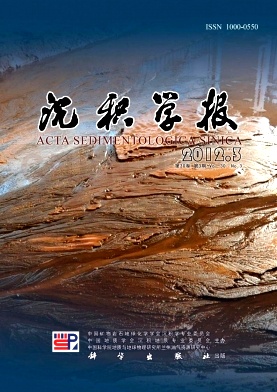Sedimentary Evolution and Microfacies Analysis of the Late CretaceousOligocene from Wuqia Area in the Northwestern Tarim Basin
- Publish Date: 2012-06-10
-
Key words:
- northwestern margin of Tarim Basin /
- Late Cretaceous to Oligocene /
- carbonate microfacies /
- sedimentary evolution /
- /
- /
- /
Abstract: The evolution of the New Tethys has been attracting the interest of many geologists around the world for it separated Eurasia and Gondwana during the Mesozoic era. In addition to creating the AlpsHimalayan orogenic system, the diminishing and closing of the New Tethys may have played a major role in changing the Cenozoic global climate and causing the Asian inland aridity. The Tarim Basin is one of the few areas in China where MesoCenozoic marine strata are exposed. In this study, Kuzigongsu section of Late Cretaceous to Oligocene strata is selected to investigate the lithology and biological assemblage, particle composition and substrate type as well as sedimentary structure of the Late Cretaceous to Oligocene marine stratum by means of sedimentary microfacies analysis. Focusing on carbonate rocks, nine main types of carbonatefacies in the section canbe recognized, including debris cryptocrystal limestone, cryptocrystal limestone, microcrystalline (cryptocrystalline) dolomite, bird's eye cryptocrystal limestone, microcrystalline oosparite dolomite, bioclastic limestone, microcrystalline spherulite dolomite, biolimestone, and sparite oosparite limestone. Combining with sedimentary characteristics of the section,we identify five sedimentary facies (supratidal zone, intertidal zone, sublittoral zone, shallow of platform edge, and reefs) and restore the sedimentary evolution process from the late Cretaceous to Oligocene in the section. Based on the distribution of sedimentary facies and the regional information, there are five cycles of marine transgression along the northwestern margin of Tarim Basin from the Cretaceous to Paleogene. Three largescale transgression are found in Kukebai group , Qimugen group and Kalataer group and two smallscale transgression are found in Yigeziya group and the late of Bashenbulake group. No numerous marine paleontology fossils are found in the strata lying above the oyster layer in the uppermost part of Bashenbulake Formation, which implicate that the New Tethys finally retreat from the northwestern margin of Tarim Basin in Oligocene at the top of Bashibulake Formation. Thus,these will surely provide some references for finding out evolution of the Tethys Ocean from the Cretaceous to Oligocene and reconstructing regional paleoenvironment of Tarim Basin.
| Citation: | Sedimentary Evolution and Microfacies Analysis of the Late CretaceousOligocene from Wuqia Area in the Northwestern Tarim Basin[J]. Acta Sedimentologica Sinica, 2012, 30(3): 501-510. |






 DownLoad:
DownLoad: